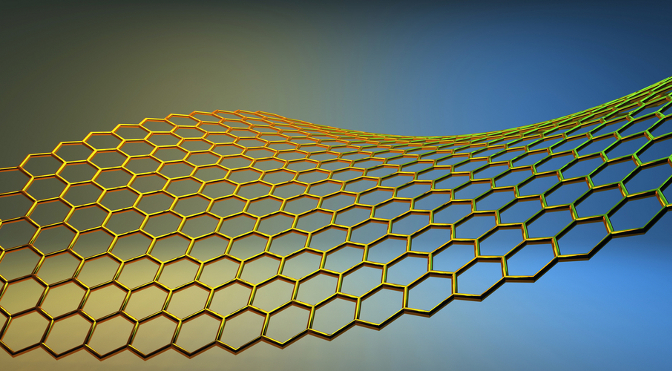
2004
Andre and Kostya frequently held ‘Friday night experiments’ – sessions where they would try out experimental science that wasn’t necessarily linked to their day jobs.
One Friday, the two scientists removed some flakes from a lump of bulk graphite with sticky tape. They noticed some flakes were thinner than others. By separating the graphite fragments repeatedly, they managed to create flakes that were just one atom thick. Their experiment had led to graphene being isolated for the very first time.
Because the graphene flakes are only just one atom thick, they are considered to be two-dimensional crystals. Graphene thus became the first known 2D crystal. Other 2D crystal types have been developed since the initial discovery of graphene.
Sources:
- April 11, 2015. The University of Manchester – The home of graphene. Graphene Explained. Runtime: 2:47.


https://www.youtube.com/watch?v=_cDh4B6knKw&t=167s.
Video, University. - “Discovery of Graphene.” Graphene – The University of Manchester.

https://www.graphene.manchester.ac.uk/learn/discovery-of-graphene/.
University. - “The Nobel Prize in Physics 2010.” Nobel Prize.

https://www.nobelprize.org/prizes/physics/2010/summary/.
Nobel Prize.
The Nobel Prize in Physics 2010 was awarded jointly to Andre Geim and Konstantin Novoselov “for groundbreaking experiments regarding the two-dimensional material graphene”. - October 22, 2004. K. S. Novoselov, A. K. Geim, S. V. Morozov, D. Jiang, Y. Zhang, S. V. Dubonos, I. V. Grigorieva, and A. A. Firsov. “Electric Field Effect in Atomically Thin Carbon Films.” Science (New York, N.Y.) 306 (5696): 666–69.

https://doi.org/10.1126/science.1102896.
Research Journal. - March 2007. A. K. Geim, and K. S. Novoselov. “The Rise of Graphene.” Nature Materials 6 (3): 183–91.

https://doi.org/10.1038/nmat1849.
Research Journal. - “Andre Geim.” In Wikipedia.

https://en.wikipedia.org/w/index.php?title=Andre_Geim.
Reference. - “Konstantin Novoselov.” In Wikipedia.

https://en.wikipedia.org/w/index.php?title=Konstantin_Novoselov.
Reference.
See also, on this site:
Related:
- “Irina Grigorieva (Academic).” In Wikipedia.

https://en.wikipedia.org/w/index.php?title=Irina_Grigorieva_(academic).
Reference. - January 2010. Juhan Kim, Soo Bong Heo, Geun Hoi Gu, and Jung Sang Suh. “Fabrication of Graphene Flakes Composed of Multi-Layer Graphene Sheets Using a Thermal Plasma Jet System.” Nanotechnology 21 (9): 095601.

https://doi.org/10.1088/0957-4484/21/9/095601.
Research Journal. - December 30, 2013. “Graphene-Based Nano-Antennas May Enable Nanonetworks, Terabits-per-Second Wireless Communications « Kurzweil.” Kurzweil | Tracking the Acceleration of Intelligence.

https://www.kurzweilai.net/graphene-based-nano-antennas-may-enable-nanonetworks-terabits-per-second-wireless-communications.
Blog. - January 28, 2008. Bethany Halford. “Graphene Ribbons.” Chemical & Engineering News.

https://cen.acs.org/articles/86/i4/Graphene-Ribbons.html.
Research Journal. - October 5, 2010. “Geim Becomes First Nobel & Ig Nobel Winner.” Improbable Research.

https://www.improbable.com/2010/10/05/geim-becomes-first-nobel-ig-nobel-winner/.
Blog.
The Ig Nobel Prize is a spoof prize. Andre Geim won the Ig Nobel Prize for levitating a frog. - July 1997. M. V. Berry, and A. K. Geim. “Of Flying Frogs and Levitrons.” European Journal of Physics 18 (4): 307–13.

https://doi.org/10.1088/0143-0807/18/4/012.
Research Journal.